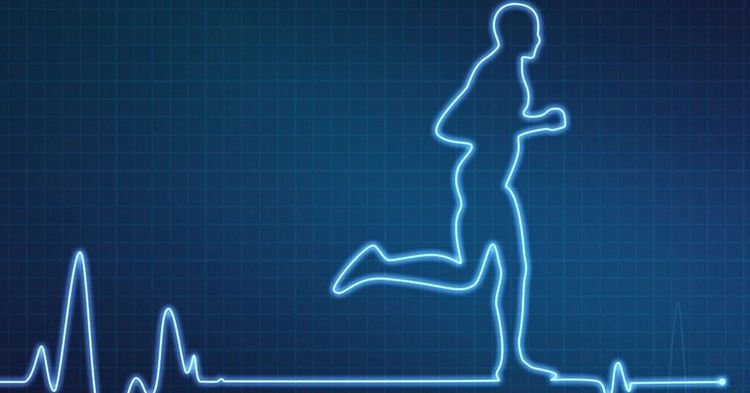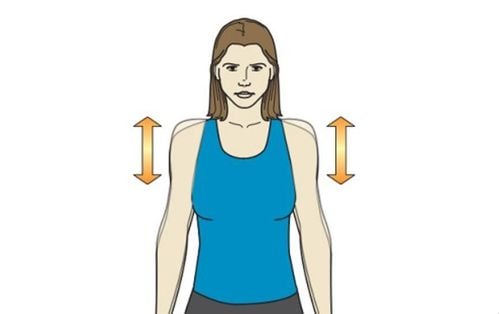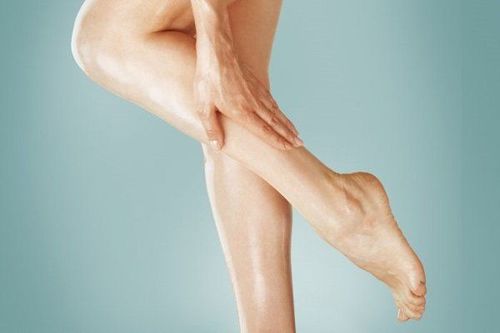If you're the type of person who frequently checks your heart rate during exercise to ensure you're in the fat-burning zone, you should stop. In reality, there's no specific fat-burning zone that's the key to achieving a beautiful, balanced body.
1. How effective are exercise and weight loss?
1.1 A burning issue
This has always been a concern for those who want to lose weight. If we look at the gym's wall charts or cardio equipment or listen to many personal trainers, we will understand the “fat-burning zone”. The standard advice for engaging in this zone is to exercise at about 60% of the body's maximum heart rate. That level of exertion is relatively low intensity; most people can speak complete sentences while exercising through the speaking test. It is said that working in this zone will burn more fat and lead to more lasting weight loss than doing the same exercise at a higher intensity.
Our bodies primarily use a combination of stored fat and carbohydrates for energy. The less active a person is at a given time, the greater the proportion of that fuel mix comes from fat. As exercise intensity increases, the contribution of carbohydrates to energy expenditure also increases.
At rest, fat makes up 85% of the calories burned. This proportion decreases to about 70% during light exercise. During moderate jogging, the mix shifts to approximately 50% fat and 50% carbohydrates, shifting more toward carbohydrates as we run faster. So it is true that at some exercise intensities, our bodies will burn a higher proportion of fat than at others.
But that doesn't mean this biological process is the key to weight loss through exercise. Experts explain that those who subscribe to the 'fat-burning zone' theory often overlook the most critical factor in weight loss: caloric intake.
1.2 Dispelling the Fat-Burning Zone Myth
First, while burning a higher proportion of fat during exercise might seem advantageous for weight loss, the impact of exercise intensity on body composition is negligible.
Christopher Breen, a physiologist and online coach in Long Island, explains, "The idea that, once you hit this zone, fat is magically sucked out of your system is simplistic. It completely ignores the fact that weight loss or maintenance is fundamentally a matter of calories in versus calories out."
If maximizing the percentage of fat burned were the primary determinant of weight loss, then remaining sedentary would be optimal, as that's when we burn the highest proportion of fat relative to carbohydrates. However, as Breen points out, the total number of calories burned is what matters, and this leads to the second major issue with the fat-burning zone concept. Christine Brooks, an adjunct lecturer at the University of Florida and the exercise science coordinator for USA Track & Field explains, "If you're exercising at a lower intensity, you're burning fewer calories per minute. A typical person walking for an hour burns only a few hundred calories. In the same amount of time, you could burn twice as many calories running, cycling, or using an elliptical at a moderate intensity.
Let's return to reality: when we schedule workouts, we typically think about time, not calories burned. Therefore, in many cases, even if we exercise 30 or 45 minutes before or after work, we won't burn as many calories if we spend that time in the fat-burning heart rate zone. Brooks states, "I'm always encouraging people to be more aggressive with their workouts, rather than believing in the myth of frequent, low-intensity exercise for creating a greater calorie deficit”.

Additionally, if you want to prove this scientifically, mathematicians can also present arguments against the fat-burning heart rate zone. For example, a person walking approximately 3.5 km in an hour would burn around 200 calories, with about 140 of those calories coming from body fat. On the other hand, someone cycling at a moderate pace for the same duration could burn up to 500 calories, with approximately 250 calories coming from body fat. Therefore, the cyclist burns more total calories and more fat calories. "When I work with people in the same gym, I tell them that: ultimately, everything related to weight loss comes down to calories," Breen says.
There’s another reason why high-intensity workouts are more effective for weight loss than fat-burning workouts. “The body can maintain a higher metabolic rate after you exercise at a higher intensity,” says Brooks. “That’s because there’s more damage to different systems, so the heart rate needs to increase while the body makes the necessary repairs.”
2. The 5 Heart Rate Zones and Their Significance for Weight Loss
Heart rate zones are a useful concept for individuals seeking to achieve specific fitness goals. With the prevalence of wearable fitness trackers, monitoring heart rate has become easier than ever - but if the only thing we know about our heart rate is that it gets very high, very quickly after exercise, you may want to learn more.
If your fitness goal is fat loss, you might wonder if there's an optimal heart rate zone for burning fat. It's a complex issue. Technically, there is a heart rate zone where your body burns a higher percentage of fat, but the rate of fat burning makes things a bit more complicated.
2.1 The Five Heart Rate Zones
Professor Thomas Roberts, a health advisor at Bupa Health Clinics, told Cosmopolitan UK, "Heart rate zones are typically divided into five training zones, which can be based on an individual's maximum heart rate (HR max)."
Zone 1: Very light exercise, with heart rate at 50-60% of HR max, sustainable for long periods, primarily burning fat for fuel, typically used for warm-ups, recovery, or cool-downs.
Zone 2: Light exercise, with heart rate at 60-70% of HR max, a mix of fat and carbohydrates is used for fuel (but mostly fat), used for longer, steady-state activities, low caloric expenditure per hour, not time-efficient, good for marathon training.
Zone 3: Moderate exercise, with heart rate at 70-80% of HR max, carbohydrates and fat are burned in a 50/50 ratio for fuel, excellent for building a strong aerobic base.
Zone 4: Hard exercise, with heart rate at 80-90% of HR max, the majority of energy comes from carbohydrates, with only about 10-45% coming from fat, time-efficient, can be a challenging 30-minute workout or used for longer sessions.
Zone 5: Very hard exercise, with heart rate reaching 90-100% of HR max, high-intensity interval training, should be a 9/10 effort level, all energy comes from carbohydrates, very time-efficient, can be muscle-damaging and sore, may lead to increased muscle mass.
2.2 Which Heart Rate Zone is Best for Fat Loss?
The body burns fat for fuel at lower exercise intensities (in zones 1 and 2), while it burns carbohydrates for fuel at higher intensities (zones 4 and 5). Experts explain that this is because "fat takes longer to break down and use for energy compared to carbohydrates." They also add, "When the demand for energy is higher at higher exercise intensities, it will use carbohydrates because the body produces energy from these very quickly. The analogy is like the gears in a car; the higher the gear, the greater the fuel required, meaning the speed needs to increase, and fat alone cannot meet this higher energy demand."
Knowing this, experts suggest that it would be logical for a person to perform exercises in heart rate zones 1 and 2 (where they are working at around 50-70% of their maximum effort) to burn fat most effectively. But it's not necessarily so.
"In zone 1, the highest percentage of fat is burned, and in zone 5, the least amount of fat is burned as fuel because the body is burning carbohydrates instead. However, this doesn't mean zone 1 is the most effective zone for fat loss," health advisor Thomas told Cosmopolitan UK. He explained that, "You would need to exercise for a longer period of time at the lower intensity of zones 1 and 2 to burn the same amount of calories as you would if you exercised at a higher intensity. And ultimately, it's the total number of calories you burn that determines how much fat you lose."
"A very simple example is that if a person walks for an hour in heart rate zone 2, they may burn around 400 kcal and 90% of that may be from fat sources. But if they run for an hour in zone 4, their body may burn up to 800 kcal, with around 20% from fat sources. But overall, you will burn a higher number of calories running than walking," Thomas explained."
2.3 Strategies for Reducing Body Fat
Unfortunately, there's no way to hack this system. Health experts agree, "When reducing body fat, the only way is to reduce caloric intake. This means consuming fewer calories than you burn. All diets work on this principle, but different diets work for different people, and the best diet for you is the one you can stick with."
Beyond diet, the best advice experts give for burning fat is to ensure your workout routine includes a variety of heart rate zones. Essentially, the more time you spend in a zone, the better you'll get at working in that zone. Mix up your heart rate zones for optimal results to create variety."
Exercises for different heart rate zones can yield different results for exercisers. This means that low-intensity exercise is not a waste of time. Even elite athletes regularly and purposefully engage in low-intensity workouts. These workouts are a great way to de-stress, recharge, and improve overall health, and they offer an opportunity for people to spend time with friends and family while still burning calories and supporting weight loss goals.
To arrange an appointment, please call HOTLINE or make your reservation directly HERE. You may also download the MyVinmec app to schedule appointments faster and manage your reservations more conveniently.
Reference sources: mountelizabeth.com.sg, cosmopolitan.com












